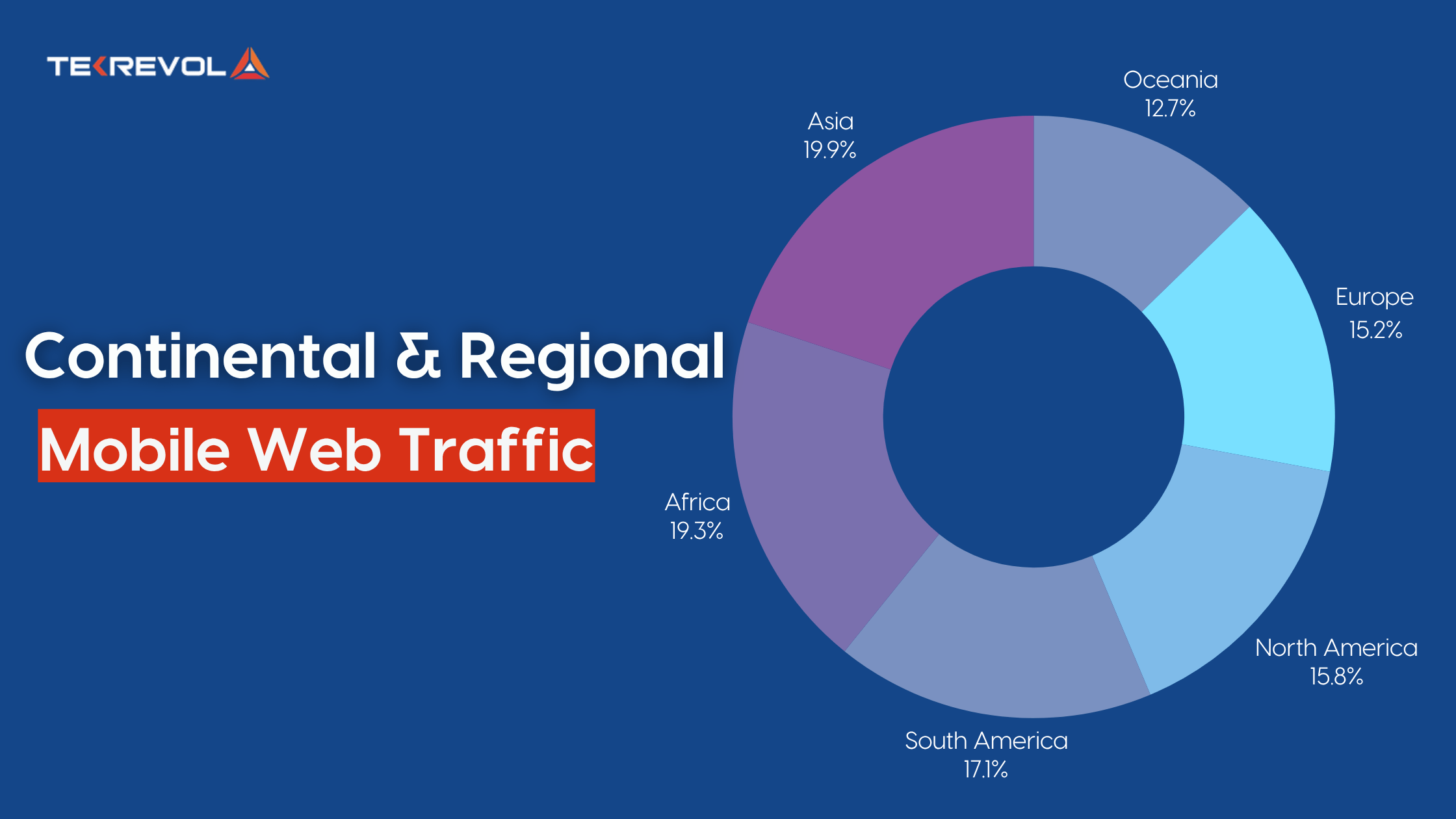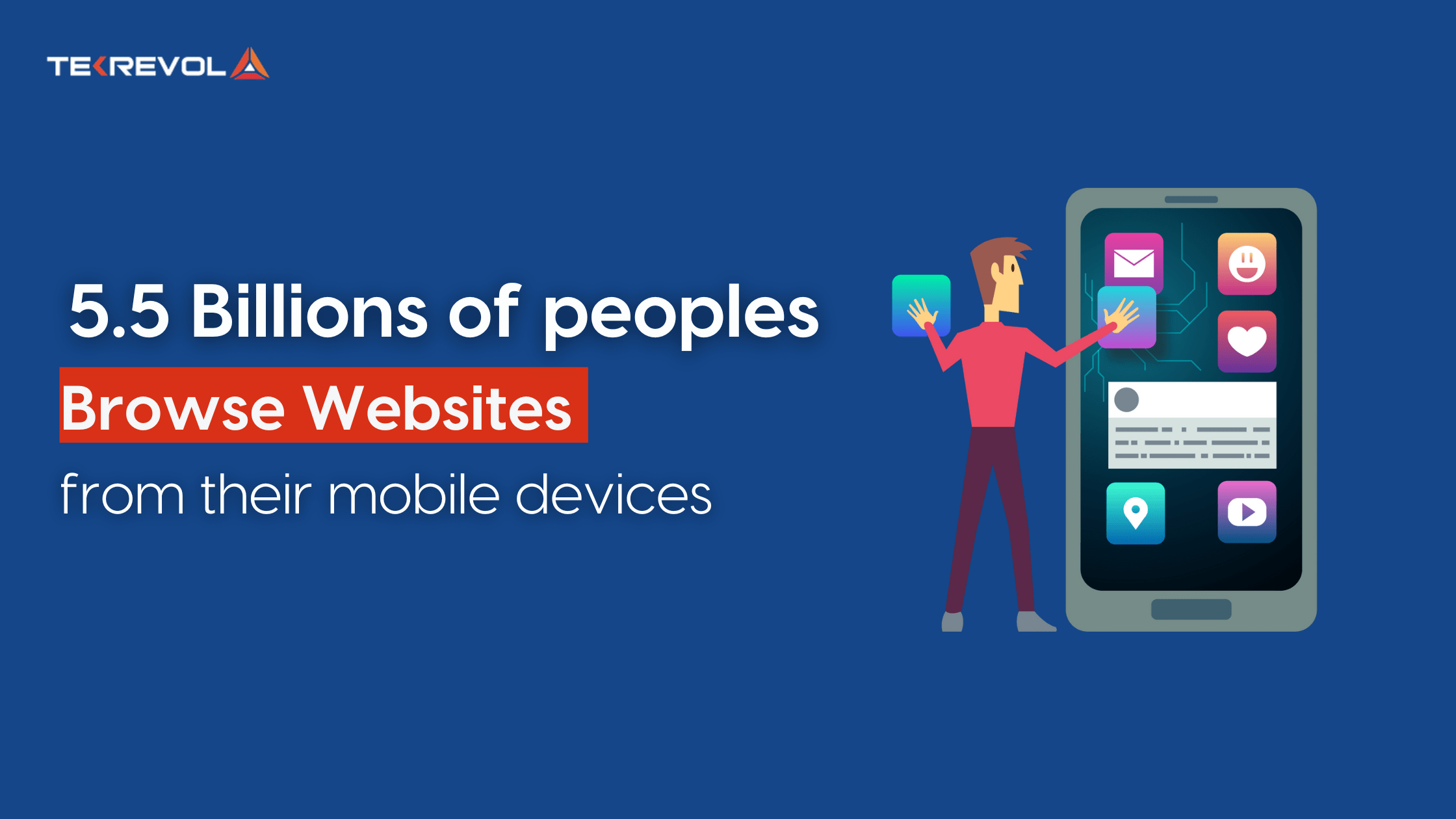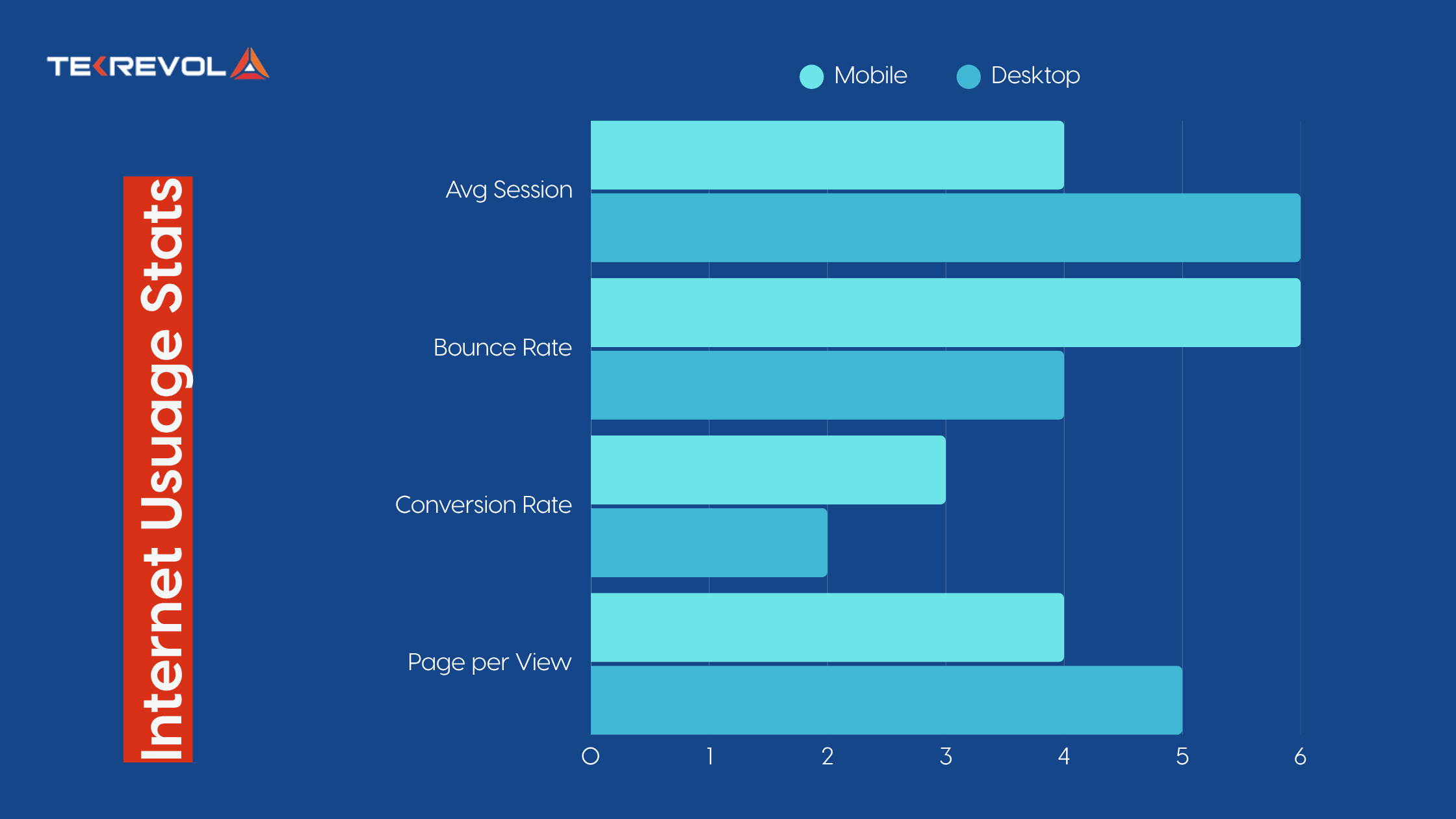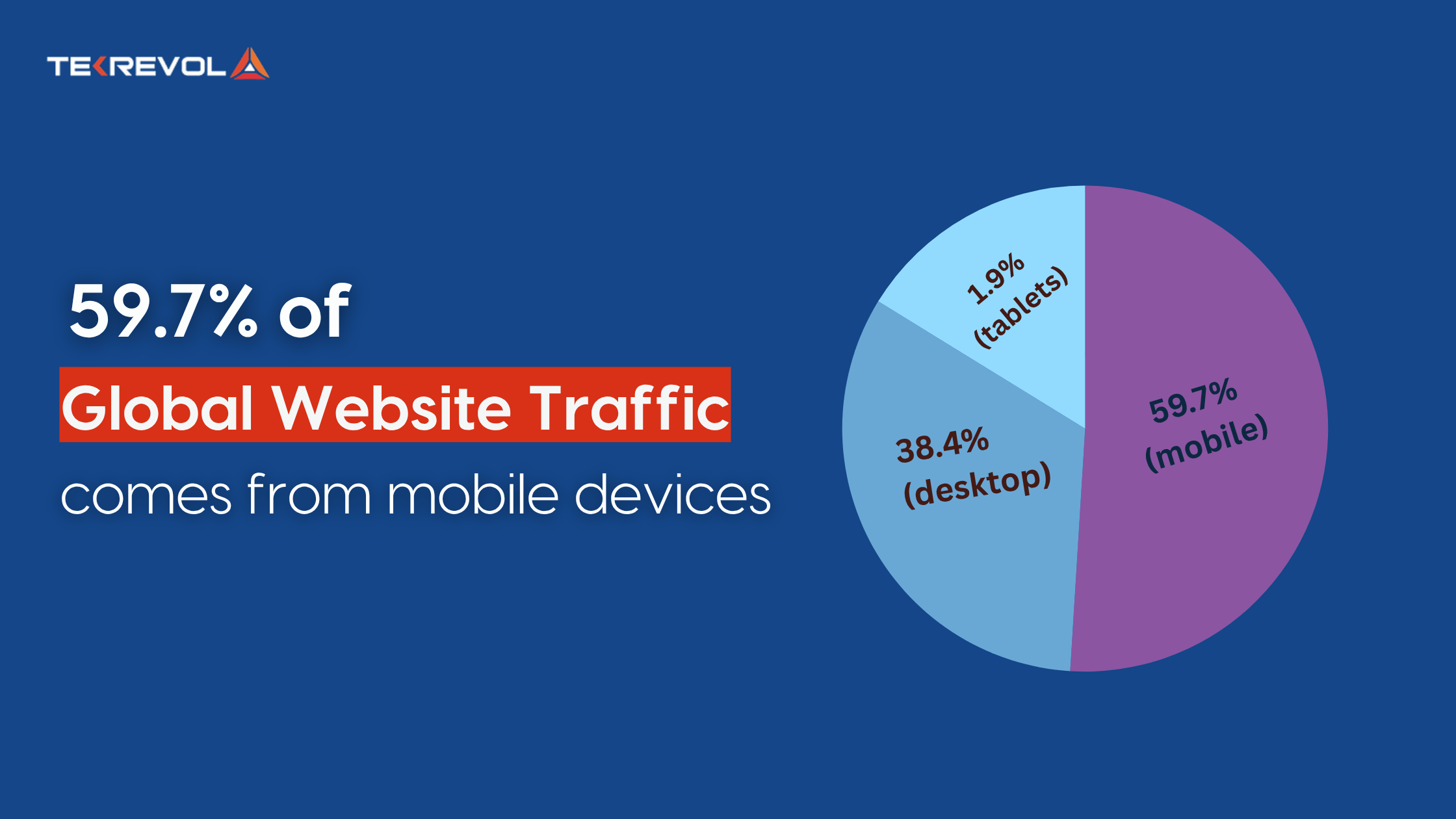Okay, quick question: how many times have you grabbed your phone today?
Be honest, it’s probably already in the double digits, right? And we’re not even close to lunch yet. It is pretty wild how attached we are to these little devices. You’re definitely not alone in that.
Whether scrolling through Amazon (buying something you probably don’t even need), catching up on the news, or binge-watching YouTube shorts, most of our online activity is happening on our phones these days. It’s just how things are now.
And you know what stands out in all of this? The massive rise of mobile device website traffic. But here’s the big question: just how much web traffic is coming from mobile? How many people are using their phones to browse websites in 2025?
Well, that’s exactly what we are here to explore. In this blog, we’ll walk you through the latest stats, some cool insights, and even a few charts to show how far we’ve come from desktop to mobile-first.
Trust me, it’s a story you don’t want to miss.
What is Mobile Device Website Traffic?
Before we get lost in all the juicy data, let’s quickly clear up what we mean by mobile device website traffic. It is one of those terms that can sound a little technical, but trust me, it’s super simple once we break it down.
Put simply, Mobile Device Website Traffic refers to the number of website visitors accessing content from mobile devices like smartphones or tablets, rather than desktops or laptops.
This metric matters more than ever. Why? Because:
- It tells us how users are engaging with websites.
- It impacts SEO rankings, UX design, and in-app ad strategies
- And it reflects broader changes in how we live and work
So, if you have been wondering how much web traffic comes from mobile devices in 2025, the short answer is: A lot.
Long answer? Let’s unpack it.
According to StatCounter Global Stats, as of April 2025, mobile devices are driving about 59.7% of global website traffic.
Yep, you read that right. Nearly 2/3 of people browsing the web are doing it from their phones. Pretty wild, right?
These numbers are a slight uptick from 2024 and a huge leap from 2015, when the share was just under 35%.
“The shift to mobile isn’t just a trend, it is the new normal.” Digital Trends Report, 2025
For comparison:
- In 2015, mobile accounted for just 35% of web traffic
- By 2020, it had jumped to 52%
- In 2023, it hit 60.9%
- Now in 2025, we’re at 63.8%, and rising
This steady growth shows no signs of slowing down. In the meantime, desktops contribute just 38.4%. Tablets, despite the early 2010s hype, hover around 1.9%, almost an afterthought.
What’s behind this shift?
Here are a few key factors fueling this mobile-first world:
- Smartphone penetration is now above 90% in many regions.
- Over 92% of global internet users are now using their mobile phones to access the internet at least once a month. That’s pretty much everyone, right?
- High-speed 5G connectivity has expanded globally, reducing load times.
- Mobile-first platforms like TikTok and Instagram, along with mobile-optimized online shopping apps, are keeping people glued to their screens and driving engagement like never before.
These trends aren’t just limited to global averages. In mobile-first economies like India, Nigeria, and the Philippines, mobile traffic often exceeds 70% of total web usage.
In contrast, desktop still holds stronger ground in countries like Germany, Japan, and the United States. But even there, mobile is catching up very fast.
Reminder: If your website or product isn’t optimized for mobile, you’re losing visibility where it matters most on the screens users check 96 times a day. To boost retention and performance, turn your website into a mobile app in 2025.
Regional and Continental Mobile Web Traffic Trends
Think mobile usage is just a Western world trend? Think again.
The mobile story changes from country to country. In many parts of the world, mobile came first, and desktop barely showed up. Others use both sides by side.

Knowing who’s using what, and where, gives marketers a big edge. It shows what tech is available, what’s popular, and how people engage online.
Mobile Traffic by Region
Here is a quick look at how mobile website traffic stacks up globally in 2025, as per StatCounter’s 2025 data:
- Asia is leading the charge when it comes to mobile usage. 72.3% of all web traffic there comes from smartphones. Countries like India and Indonesia are all about mobile-first access, thanks to the widespread availability of smartphones and affordable mobile data.
- Right behind Asia is Africa, with 69.8% of web traffic coming from mobile devices. This surge is driven by the fact that desktops are less common, and more people are getting their hands on smartphones every day.
- South America reports 62.1% mobile traffic, especially for social media and entertainment consumption.
- North America sees 57% of traffic coming from mobile devices, where users still split browsing between desktop for work and mobile for leisure.
- In Europe, things are looking pretty balanced. Mobile traffic clocks in at around 55%. People are just as likely to browse on their laptops as they are on their phones, especially in places like Germany, France, and the UK, where broadband access is solid.
- As for Oceania specifically, Australia and New Zealand, you’ll notice mobile hasn’t taken over yet. With a mobile web traffic share of 45.5%, the region still leans on desktops a bit more. Why? Well, many workplaces still prioritize desktop setups, and the desktop browsing culture here hasn’t faded as quickly as in other parts of the world.
Fun Fact: In Some Countries, Desktops Are Almost Obsolete
In places like Nigeria and Bangladesh, over 80% of users access websites only through mobile devices. Laptops? Rare. Desktops? Almost nonexistent outside of offices.
This shift is a reminder to businesses that if your website doesn’t work flawlessly on mobile, you’re losing customers.
Why Mobile Search Dominates in Emerging Markets
As you can see, Asia leads in mobile usage. But the question is, what’s driving all this? It’s about two things:
- Smartphones are everywhere, and affordable internet. In places like India and Indonesia, mobile-first is the norm—people are using their phones for just about everything, and it’s often their main device for browsing and working.
- With budget-friendly smartphones and cheap data plans, more and more people can jump online without breaking the bank. It’s like having the whole world at your fingertips, all from your pocket.
In contrast, North America and Europe show slower adoption rates for mobile traffic. Although usage is still substantial. Desktop remains relevant for work-related browsing patterns, while mobile dominates casual and consumer behavior.
The difference in regional share of traffic highlights the importance of location-specific optimization. What works for users in Asia may not resonate with audiences in the US or Germany.
- Ready to Grow in Mobile First Market?
- At Tekrevol, we turn ideas into market-ready apps.
How Many People Use Mobile Devices to Access Websites?
You’d be surprised by how universal mobile browsing has become. The latest figures from GSMA Intelligence show:
- 6.9 billion people now own smartphones (that’s 85% of the global population)
- Of those, 5.5 billion people actively browse websites from mobile devices

So if you’re asking how many people use mobile devices to access websites, the answer is: more than two-thirds of humanity.
This means businesses that still rely on desktop-optimized websites are missing out on a massive chunk of potential engagement.
Mobile Device Website Traffic by Industry
Since Industries evolve based on where their customers go, you must be thinking, Which industries are seeing the most mobile web traffic?
Well, most industries are almost exclusively mobile now. Here’s a snapshot of mobile’s share of traffic by sector as per Contentsquare analysis in 2024:
- E-commerce: Mobile devices account for 71.8% of e-commerce traffic, emphasizing the need for mobile-optimized shopping experiences.
- Media & Publishing: See 66.2% of their traffic from mobile users, highlighting the importance of responsive content delivery.
- Travel & Hospitality: Experience 58.5% mobile traffic, indicating a significant portion of users planning and booking trips via mobile.
- Banking & Finance: Has 49.4% mobile traffic, showing a growing trust in mobile financial transactions.
- B2B SaaS: Lower mobile traffic at 34.7%, suggesting desktop remains prevalent for business applications.
Retail and media sectors dominate in mobile website traffic, as consumers prefer the ease of browsing and purchasing from handheld devices.
Key takeaway: If your business falls into one of these categories, prioritizing mobile-first web design isn’t optional; it is mission-critical.
Mobile Device Website Traffic Share by Device Type
Not all mobile traffic is equal. StatCounter Jan 2025 report depicts how the share of web traffic is currently split across different device types worldwide:
| Device Type | Global Traffic Share (2025) |
| Mobile | 58.7% |
| Desktop | 38.1% |
| Tablet | 3.2% |
| Other (wearables, etc.) | 2% |
As you can see, mobile internet traffic dominates the scene, and the gap is only expected to grow wider by the end of the year.
Why do Smartphones remain king? Well, seeing that tablets are losing share year after year due to larger phone screens making tablets redundant.
Mobile Traffic Breakdown OS: Android vs iOS in 2025
Now, let’s break down the mobile web traffic by operating systems: Android vs iOS stats. These two are battling it out for dominance, and their impact on website traffic is telling.
It is not just about what device people are using; it’s really about the experience and what’s driving those clicks. Let’s take a look at how the numbers break down:
| Operating System | Global Mobile Traffic Share | Growth Rate | Usage Percentage |
| Android | 72% | 3% | 70-75% |
| iOS | 28% | 5% | 25-30% |
So, what’s going on here?
Android’s dominance kind of makes sense when you think about it. With so many affordable smartphones running Android, it naturally captures a huge share of global mobile traffic. This is especially true in developing regions, where Android phones are more accessible and widely used.
Now, iOS may not have the same global numbers, but don’t count it out. In places like North America and Western Europe, Apple still holds strong. People in those regions tend to prefer iPhones, and that’s reflected in the traffic data.
What’s interesting is how engaged iOS users are. Even with a smaller share, they spend more time on their devices and are incredibly loyal. That makes iOS a powerful platform for targeting high-value users.
Mobile Device Website Traffic: Leading Brands in 2025
When we talk about mobile traffic, it is not just about whether you are a team Android or iOS. It’s also about who’s building the devices we use every day.
Think about it: Apple, Samsung, Huawei, Xiaomi, Google. These aren’t just tech giants; they’re the brands shaping how we scroll, search, and shop online. From screen size to speed to user interface, they are quietly steering our entire mobile web experience.
Curious who’s winning the mobile traffic game in 2025? We dug into fresh stats from StatCounter, GSMArena, and IDC, and here’s how it all breaks down by brand:
| Brands | Mobile Traffic Share | Global Mobile Traffic | Notable Devices |
| Apple | 28% | 1.5 billion unique users | iPhone 15, iPhone 14 Pro, iPhone SE |
| Samsung | 22% | 1.3 billion unique users | Galaxy S23, Galaxy Note 20, Galaxy Z Fold |
| Huawei | 5% | 0.3 billion unique users | Huawei P50, Mate 50 Pro, Huawei Nova 9 |
| Xiaomi | 8% | 0.4 billion unique users | Xiaomi 13 Pro, Redmi Note 12, Mi 11 Ultra |
| 4% | 0.2 billion unique users | Google Pixel 8, Pixel 7 Pro, Pixel 6a |
App Traffic vs. Browser: Where Are People Browsing on Mobile?
If mobile is winning, what about how people are accessing websites? Here is the twist! A large portion flows through in-app web views.
For example:
- Instagram’s shopping links
- LinkedIn’s in-app browsers
- Facebook external content
In 2025, an estimated 31% of mobile web sessions happen via in-app browsers rather than Chrome or Safari. According to Global State of Mobile:
- 70% of time spent on mobile is inside apps.
- BUT, mobile web still drives 35 % above of eCommerce conversions.
So while people spend more time in apps, they discover products and services on browsers. They serve different user intents, and both contribute significantly to overall mobile engagement.
Mobile App Engagement vs Mobile Web Browsing
- Apps account for 70% of mobile time spent online, particularly in social media, entertainment, and eCommerce.
- However, mobile web still brings in more new users due to SEO visibility and accessibility without installation.
When to Use Mobile Web vs Mobile App
- Use mobile web for brand discovery, SEO content, and casual browsing.
- Prioritize apps for loyalty, engagement, and frequent actions like shopping or checking accounts.
Key takeaway? Your mobile website is still your brand’s front door, even if you have an app.
Mobile Content Consumption Trends: Video Is King
2025 is the year of vertical video. Short-form platforms like TikTok, YouTube Shorts, and Instagram Reels dominate attention spans.
According to Cisco’s mobile data report:
- 82% of all mobile web traffic is video-related
- The average user watches over 50 minutes of video on mobile daily
And here’s what’s trending:
| Content Format | % Share of Mobile Video Views |
| Short-form (<3 min) | 61% |
| Long-form | 27% |
| Live Stream | 12% |
Mobile Advertising and Traffic Acquisition Trends in 2025
In 2025, global mobile ad spending is set to soar past $500 billion. You read that right! It is more than 70% of the entire digital ad spend.
But why is this happening? Well, mobile ads work plain and simple. People are pretty much glued to their phones 24/7.
Social platforms? Mobile-first. And the targeting? Spot on, almost like they know exactly what you want.
But it’s not just the old-school banner ads anymore. Formats like in-feed video, playable ads, and story-based creatives are killing it.
Oh, and we can not forget about voice search and location-based ads. They are growing fast, thanks to all that mobile browsing we’re doing.
Mobile Ad Spend and Performance Statistics
- Mobile ads now represent 72% of global digital ad spend, with over $450 billion allocated to mobile campaigns in 2025.
- Click-through rates (CTR) for mobile ads outperform desktop by 35%, especially on platforms like Instagram, TikTok, and YouTube Shorts.
- In-app advertising accounts for 60% of mobile ad impressions and performs particularly well in gaming, finance, and eCommerce apps.
Conversion Insights: Mobile Bounce Rates Are Higher, But So Are Click-Through Rates
Mobile accounts for 55% of all website visits globally, with most users preferring mobile for casual browsing and quick searches. But mobile users are impatient.
A recent Google study shows that 53% of mobile users will abandon a website if it takes more than 3 seconds to load. According to Semrush’s 2023 Mobile vs Desktop Report:
| Metric | Mobile | Desktop |
| Bounce Rate | 54% | 42% |
| Ad Click-Through Rate | 4.1% | 3.2% |
How Much Web Traffic is Lost on Bad Mobile UX?
Poor mobile design is costing businesses big time. In 2025:
- 53% of users bounce if a mobile page takes longer than 3 seconds to load.
- Over 70% abandon a mobile cart if the checkout flow isn’t optimized
In other words, bad mobile UX = lost traffic + lost revenue.
Mobile Website Optimization: What Matters Most in 2025
Let’s get practical. If you want to ride the mobile wave, here’s what matters now:
- Page Speed: A 1-second delay in mobile load time can reduce conversions by 7%. Use tools like Google PageSpeed Insights or GTmetrix to identify slowdowns.
- Responsive Design: Your website should look great on every screen, from iPhones to Galaxy tablets. No pinching, zooming, or scrolling sideways.
- Intuitive Navigation: Menus should be tap-friendly, buttons should be easy to reach, and calls to action should be impossible to miss.
- Mobile SEO: Focus on Fast-loading AMP pages, Structured data, and Local SEO optimization (think “near me” searches)
- Ready to boost your mobile website’s performance?
- We know how to make your website fast, responsive, and user-friendly to elevate your mobile presence.
Mobile vs Desktop Internet Usage Statistics: Who’s Winning in 2025?
Here’s where things get spicy. People aren’t just browsing cat videos on phones—they’re shopping, banking, working, and even attending virtual therapy.

So naturally, mobile web sessions are longer, more interactive, and more conversion-driven.
Let’s compare how mobile stacks up against desktop this year:
| Metric | Mobile | Desktop |
| Average Session Duration | 4.3 minutes | 5.1 minutes |
| Bounce Rate | 53.2% | 45.7% |
| Conversion Rate (E-comm) | 3.1% | 2.8% |
| Pageviews Per Session | 3.8 | 4.6 |
Insight:
While mobile is king in personal browsing, desktops still dominate during working hours. A 2024 survey by SimilarWeb showed:
- 71% of B2B website traffic during 9–5 hours comes from desktops.
- Mobile usage spikes during lunch, commute hours, and after 6 PM.
Think of it this way: Different screens for different tasks. Desktops are for spreadsheets. Mobiles are for everything else.
A HubSpot analysis (2024) reveals the specific activities where mobile leads:
- Social media: 95% mobile
- Online shopping: 73% mobile
- News reading: 67% mobile
Desktop still dominates in:
- Work and productivity: 82%
- Online education: 58%
Here’s the twist: while mobile leads globally, the picture changes when you zoom into certain regions or industries. For instance:
- In the US and Germany, desktops still command roughly 45–50% of traffic. These are countries with strong enterprise cultures, where work often happens on multi-screen setups.
- But in regions like India, Brazil, and Southeast Asia, mobile usage easily pushes past 70%. These markets often skipped widespread desktop adoption and went straight to mobile.
This duality is fascinating. It’s not just about device preference; it is about access, culture, and even climate (try working on a laptop in the middle of a bustling open market in Lagos or Manila).
What’s also interesting is how we use these devices differently:
- Mobile users are more likely to scroll quickly, bounce between apps, and expect instant loading times.
- Desktop users, on the other hand, are more deliberate. They’re the ones opening ten tabs while researching a big purchase or writing long emails.
In short, Mobile is about speed and convenience. The desktop is about focus and depth.
Why Mobile Device Website Traffic Keeps Growing
So why is mobile eating the web?
1) People Spend More Time on Mobile Devices
Whether catching up on TikTok trends, browsing for the latest tech gadget, or reading the news, mobile devices are now a key part of our daily lives.
And the numbers don’t lie. DataReportal’s 2024 report reveals that the average person now spends 4.8 hours per day on their smartphone.
That’s a 40% increase from 2020, when the average was just 2 hours and 40 minutes. And nearly 70% of that time involves browsing websites, shopping, or using web-based apps.
2) Mobile Shopping is Booming
We’re officially in the era of mCommerce. A Statista report shows that 73% of all eCommerce sales in 2025 are made on mobile devices.
Let that sink in.
From fashion to groceries, users are browsing, adding to cart, and paying all on their phones. Here’s a breakdown by product category:
| Category | % of Sales via Mobile |
| Fashion | 81% |
| Electronics | 68% |
| Groceries | 76% |
| Beauty & Wellness | 79% |
| Home Decor | 62% |
And don’t forget social shopping—Instagram, TikTok, and Pinterest are powerful discovery and checkout platforms now.
3) Mobile Payments: The Financial Frontier of Mobile Web Traffic
Mobile payments are seriously changing the way we shop. Forget about typing in credit card details or remembering passwords. Now, you can just tap your phone, and boom, you’re done!
By 2025, more than half of global e-commerce transactions, which is 52% to be exact, will be made through digital wallets like Apple Pay, Google Pay, and Samsung Pay. Pretty wild, right?
Take Asia-Pacific, for example. Around 50% of people there are already using mobile wallets for their shopping.
But here’s the kicker: In China, 85% of digital payments are made through apps like WeChat Pay and Alipay. It’s a way of life there. And guess what? The rest of the world is catching up quickly.
4) Google Search is Mobile-First (And Has Been for a While)
Let’s not forget that Google switched to mobile-first indexing years ago. In 2025, over 64% of all Google searches will be done on mobile.
Google even stated that “mobile usability is a top-ranking factor in 2025’s algorithm update.”
That means: If your website isn’t mobile-optimized, it won’t just frustrate users—it’ll vanish from search rankings.
Pro tip for marketers: Optimize for mobile SEO, fast load speeds, responsive design, and voice keywords. For a comprehensive understanding, explore these top advanced SEO strategies.
5) Impact of Voice Search
A surprising driver of mobile web traffic in 2025? Voice search which is also growing rapidly, especially in regions like India, Brazil, and the US.
Thanks to AI assistants like Siri, Alexa, and Google Assistant, nearly 28% of mobile web traffic now originates from voice queries. This is particularly true for local business lookups and FAQs.
6) The Role of 5G in Mobile Web Traffic
Here’s what nobody’s talking about enough: 5G changed everything.
With speeds up to 10x faster than 4G, 5G makes rich media and real-time experiences (like AR, VR, live streaming) seamless.
According to Google’s PageSpeed Insights as of early 2025:
| Network Type | Avg Load Time |
| 5G | 2.7s |
| 4G | 4.9s |
And guess what?
- Over 52% of global smartphone users now have 5G access
- Countries like South Korea, UAE, and China lead with 70 %+ 5G penetration
This is not just about faster speeds. It is more about unlocking new user behaviors.
Future Outlook: Mobile Traffic in the Next 5 Years
Digesting all this data, you must be thinking, what’s left for mobile traffic? If things keep going the way they are, mobile is only going to get bigger and more dominant.
It is going to keep reshaping the way we build, optimize, and experience everything online. Remember, here we are talking about a future where everything is tailored to fit the mobile-first world we are living in.
Projected Growth in Mobile Website Traffic
Ericsson’s Mobility Report forecasts that 75% of global web traffic will come from mobile by 2030. Supporting indicators:
- Increasing mobile internet penetration
- Generational behavior shifts
- Enterprise app transformation
AI and Personalization in Mobile Experience
You know those eerily accurate product recommendations? That’s AI-powered personalization, and it is getting smarter.
Using behavioral signals (clicks, time on page, device type), an Artificial Intelligence company can:
- Auto-personalize landing pages
- Trigger location-aware offers
- Adjust content for speed & data usage
And when it comes to mobile:
“AI helps brands create one-to-one journeys in a one-size-fits-all space,” says Claire Johnson, CTO at an AI marketing firm.
Expect AI-based dynamic mobile experiences to become the new norm.
It is not just growth, but rather a momentum. Mobile is no longer an alternative channel. It now serves as the foundation of digital interaction.
Tekrevol’s Take: Designing for the Mobile Default
At Tekrevol, we are not here to just follow mobile trends; we are here to set them.
As a mobile app development company that’s always looking ahead, we help brands make the most of every digital moment in today’s mobile-first world.
Whether you’re a startup building an app from scratch or an enterprise optimizing your mobile funnel, we have got you covered.
- Custom mobile app development
- Mobile-first web design
- ASO & mobile SEO
- AI-powered personalization
- Privacy-first analytics
Let’s make your mobile traffic count. Get in touch to build something amazing together.
- Ready to make every mobile visit count?
- Partner with TekRevol to create a mobile experience that converts.












